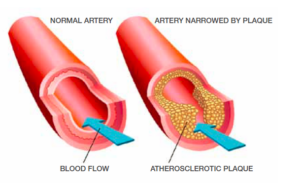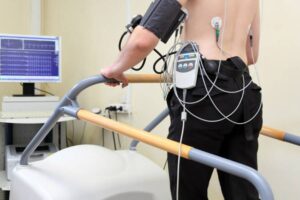What is coronary artery disease, and how do doctors decide when to balloon a blocked artery? – The Role of Fractional Flow Reserve
Today I’ll be talking more about the most common heart disease worldwide – along with the best technique doctors can use to determine the optimal treatment plan.
First of all, coronary artery disease(CAD), also known as coronary heart disease, affects MILLIONS of people worldwide. As the most common heart disease, CAD is the result of a plaque build-up in the arteries – known as atherosclerosis.
This cholesterol and calcium accumulation narrows or blocks the space.

The resulting restricted blood flow reduces the amount of oxygen moving to the heart.
While there are various of CAD treatments available, one of the most traditional methods is an angiogram – an x-ray that examines the heart’s blood vessels.
However, this visual estimation of artery narrowing may not tell the full story. This is particularly the case in the moderately diseased range of 40 to 70%. So when would such vessels need to be unblocked with balloon or stent and which ones can we safely treat with medication alone?
A very powerful tool that helps physicians formulate the best treatment plan for CAD patients…is FFR, short for Fractional Flow Reserve. The idea is to determine the pressure after the blood flow blockage, compared to the pressure before it. To put it simply, an FFR of 0.80 indicates a twenty percent drop in blood pressure.
So in an artery with what appears to have a tight narrowing, if the FFR is greater than 0.80, it implies that there is adequate flow to supply the heart and no operation is needed. On the other hand, a relatively benign looking narrowing but where a FFR was measured below 0.80, the narrowing should be unblocked to improve the blood flow and oxygen to the heart.
FFR is a great way to reveal a more detailed physiological analysis of blood flow blockages to the heart. The method is typically used in coronary catheterization to confirm whether blood supply to the heart has indeed been compromised.
So how does coronary catheterization work? Here, the cardiologist carefully inserts a catheter into the wrist or groin using a sheath and guidewire. Using a small sensor on the tip of the wire, usually a transducer, FFR measures pressure, temperature, and flow – to pinpoint the lesion’s severity during maximum blood flow.
It’s clear to see why FFR is the preferred technique over an angiogram when it comes to evaluating narrowed coronary arteries.
Multiple studies have used FFR to determine the need for stenting. They consistently found that those with abnormally low FFR could expect a significantly better outcome with stenting. However, for those with high FFR, the stenosis has minimal hemodynamic significance, and stenting may be safely deferred. Optimal medical therapy alone is recommended. Medications with blood thinners like Aspirin and cholesterol lowering medications like statins should be started. In other words, FFR is undoubtedly an invaluable tool in helping physicians make the most informed decisions for the treatment of your coronary artery disease.













